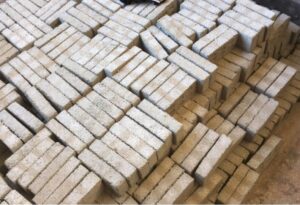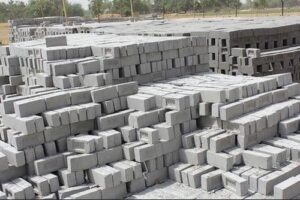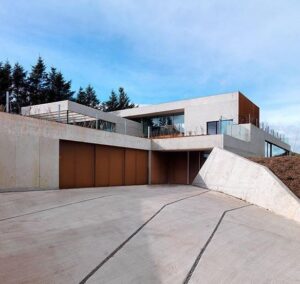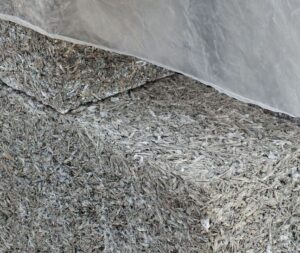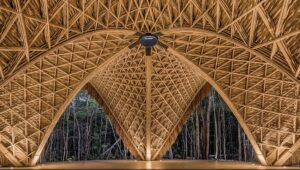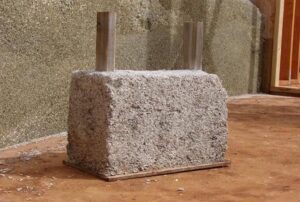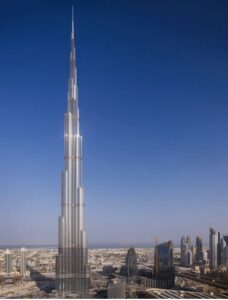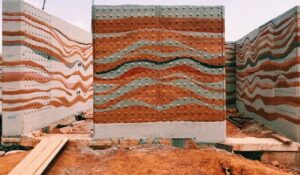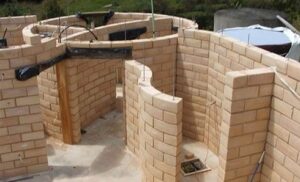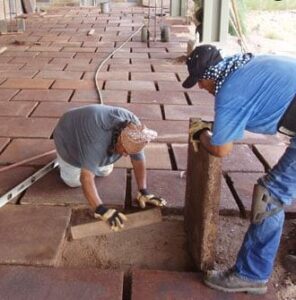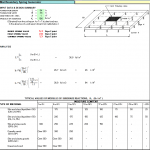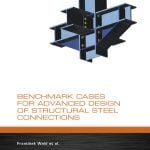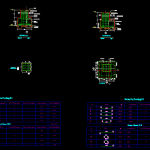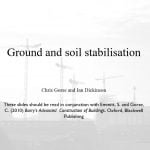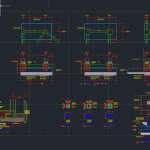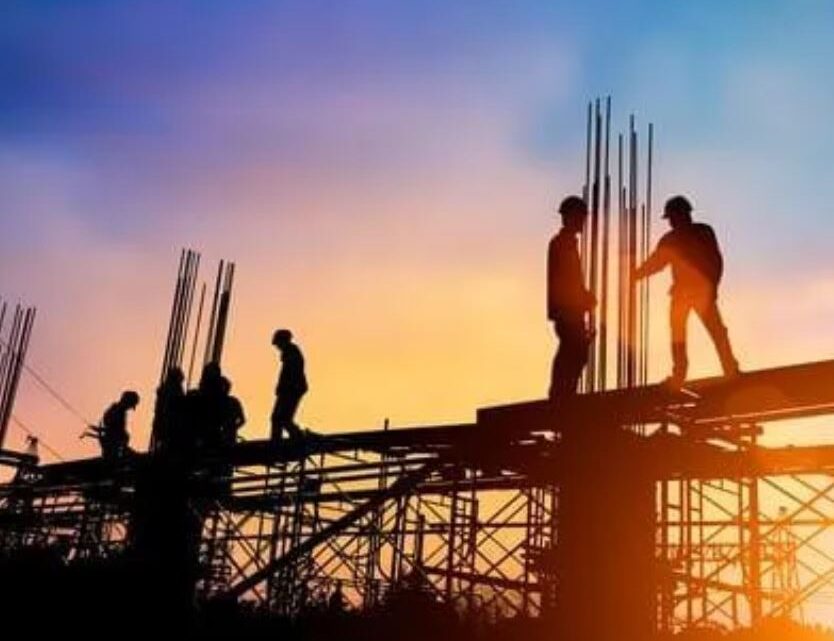
The Best Alternatives to Concrete In Construction
17 December 2021Table of Contents
The Best Alternatives to Concrete In Construction
Introduction
The cement industry is one of the main producers of carbon dioxide, and growing consumer awareness of climate change and the environmental impact of construction have some clients looking for alternatives to materials that rely on cement.
There is a growing range of concrete alternatives. These materials provide similar benefits as concrete, like strength, durability, and longevity, but at a lower carbon cost, with less environmental impact, and often with an appealing and distinctive appearance.
Concrete Alternatives For Construction
1. Recycled Plastic
Plastic is the most concerned material that significantly impacts the environment as they are non-biodegradable. It is essential to know that only 9% of the total plastic produced can be recycled.
So innovations suggest using recyclable plastic in facades of buildings or other structures. Using recycled plastic in construction is a great way to achieve fewer greenhouse gases effect while unclogging the plastic-filled landfills.
The recycled plastic can substitute 20% of aggregate in concrete; concrete blocks filled with recycled plastic are much lighter when compared to conventional concrete blocks. Using these blocks in small-scale construction is recommended while not suitable in taller structures.
Some advantages of using recycled plastic as concrete alternatives include that recycled plastic is highly versatile and can be resistant to impact, water, and chemicals.
Concrete production using recycled plastic requires less cost, and it has excellent electrical insulation and thermal properties. While the disadvantage is that plastic has a Low melting point.
2. Ashcrete
The main component in ashcrete is Fly Ash, which is a by-product of coal combustion, which is used to be discarded in the ground. Still, innovations lead this material to have a significant role to play in the green concrete manufacturing process.
Ashcrete is a concrete alternative used in modern construction to reduce the greenhouse effect, and it is also said that 25% of cement can be replaced using high-volume fly ash.
To make ashcrete similar to conventional cement, fly ash is mixed with water and lime to make it stronger and durable. Another advantage of using fly ash is that it makes concrete restraint to alkali-silica reactivity.
3. Green Concrete
Green concrete is a form of eco-friendly concrete that is manufactured using waste or residual materials from different industries, and requires less amount of energy for production. Compared to traditional concrete, it produces less carbon dioxide, and is considered cheap and more durable.
The manufacturing process of green concrete consumes Less amount of energy when compared to conventional. concrete.
The carbon emission from the production is comparatively less, and it is an economical. and durable concrete alternative.
4. Blast Furnace Slag
Blast furnace slag is a by-product produced and used as a concrete alternative in construction, and it is an environmentally friendly material that would impact less greenhouse gas effect.
This blast furnace slag comes in the form of glassy granular material produced by quenching molten iron slag from the blast furnace into steam or water.
This concrete alternative can replace 70-80% of cement and improve the durability and strength of concrete. During the blast furnace slag, the production process emits less hydration or heat.
5. Papercrete or Fibrous Concrete
Papercrete is a concrete alternative made by recycling the waste paper and used as an aggregate material in concrete. The cement is not entirely replaced by papercrete in the concrete mixture.
But some small quantities of papercrete are enough to combat some harmful effects during concrete production. Papercrete is considered to be one of the cheap or economic concrete alternatives.
The workability of this concrete alternative material is good enough; it can be molded into different shapes. The concrete blocks made from papercrete are lightweight.
Along with the advantages, there are some disadvantages of papercrete. The damp resistance of paper is low and has Less compressive strength than traditional concrete.
6. Bamboo
In many countries, Bamboo has replaced steel, has modern innovation comes with new ideas regarding concrete alternatives.
Bamboo is considered one of the best concrete alternatives as they possess characteristics like tensile strength, lightweight, and fast-growing renewable nature.
Bamboo is mainly used in framing buildings and shelters, as these are locally available building materials and cost very little compared to conventional materials.
7. Glasscrete
In galsscrete, glass substitutes fine aggregates in the concrete mixture, and the glass is broken into small pieces. The concrete mix of glasscrete includes cement, coarse aggregate, and glass aggregate components.
Concrete with broken glass has better workability than concrete with natural. sand. Using glass can increase the durability and efficiency of the concrete.
8. Hempcrete
Hempcrete, also known as hemplime, is a bio-composite material that can be used in construction as an alternative to materials such as concrete and traditional insulation.
Hempcrete is made by using the woody inner fiber of the hemp plant. The manufacturing process of hempcrete involves bounding hemp fibers with Lime to crate concrete-like shapes that are lighter and stronger.
Some advantages of hemperete are that they are super lightweight, and hemp is a renewable resource as they are grown continuously.
9. Micro Silica
Micro silica is the by-product of ferrosilicon alloy and silicon production and from the condensation of silicon dioxide, which comes as an ultra-fine powder. Micro silica is also known as Silica Fumes.
Micro silica has a great advantage; when added to the concrete mixture, they increase the durability of concrete by making concrete less porous and increasing its compressive strength.
Burj Khalifa is constructed using Micro Silica
This type of concrete alternative is most often used in structures that are exposed to harsh conditions like exposure to chemicals when compared to conventional. concrete, This type of concrete is less harmful to the environment, thus making it an eco-friendly material.
10. Rammed Earth
Rammed earth is made by compacting dampened subsoil between temporary formwork. The earth, once cured, is strong, durable, and resistant to the elements with the right treatment. It can be further strengthened with the use of construction techniques like rebar and steel frames.
Because the mixture of subsoil needed for rammed earth is readily available on many construction sites, it can sometimes be as easy to source as concrete — or even easier.
Construction crews require only minimal training on the material to build new structures using it. Building a rammed earth structure is a labour-intensive process, however, meaning that labour costs for a building may be higher when rammed earth is used. A crew will also need at least one skilled laborer to lead the construction process.
The material also has a unique visual appearance. It’s multi-colored, and with the layers of soil visible in the final product, it makes a good choice for clients who want a distinctive building facade or interior walls.
11. Timbercrete
Timbercrete is made from a mixture of waste sawdust and cement. It’s lighter than concrete, and because it reduces the amount of cement necessary for each brick or slab, it’s also less carbon-intensive. Depending on the ratio of sawdust to cement, it can be comparably strong and weather-resistant.
12. Ferrock
Ferrock is a carbon-negative concrete alternative. The material’s name comes from ferrous rock, but it is primarily composed of waste steel dust and ground silica glass.
The material generates significantly less carbon dioxide than concrete. It’s also very strong — around five times more sturdy than Portland cement. It’s also flexible, meaning it can bend without breaking due to compression or seismic action.
On the construction site, the material sets faster than concrete, making it practical for jobs where speed is necessary. The material can be hard to source due to its novelty, but in areas where it is available, it makes an excellent alternative to concrete.

